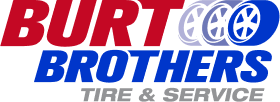Have you or a family member finally gotten that dream travel trailer? Do you regularly tow equipment or supplies for work? Whether towing for work or pleasure, making sure you get the right tires is imperative.
Towing large heavy loads or unwieldy trailers can be stressful, even for experienced drivers. Poor quality or worn-out tires can put both passenger and cargo at risk. Choosing the right tires for the job and road conditions can make towing easier and safer for passengers and cargo.
Here is a basic checklist to help you get the proper tires for your tow vehicle and trailer according to manufacturing guidelines and application needs.
Getting the Correct Tire Class For Your Towing Vehicle:
Load Range
Tires have various classifications that are used to describe their abilities. It is represented by various letters of the alphabet from A-E, which offers an idea of how durable and tough the tire is, how much air pressure it can hold, and how much weight it will carry. The farther down the alphabet, the heavier loads that the tire can carry. Choose tires that can safely handle the types of loads you plan to tow.
Speed Range
When determining the tire class that you need, you should take into consideration the speeds that you will be driving at. For instance, most C-E class tires should only be driven at a maximum of 65 MPH, otherwise, you may be looking at a higher risk of blowing out a tire. So it is important to take a look at your travel plans as well as your need to keep up with interstate speeds.
Most commonly, E-rated tires are made for long-distance traveling with a fair amount of cargo. These are comfortable tires for heavy-stress loads that can drive in multiple driving modes, including city streets, off-road trails, and highways. But you will need to look at your specific needs to decide on the type of tire you will require.
Load Carrying Range
Your vehicle’s load-carrying capacity is the third classification to think about. You’ll want to check out your vehicle’s tire load index, which will tell you how much weight your vehicle has been engineered to carry safely, as well as how much each tire can carry. Accordingly, you can match the right tire with your vehicle with additional towing in mind. You should be able to find the load range as well as the load index on the tire’s sidewall.
In addition, you should consider the gross axle weight rating (or GAWR), which means how much weight can be put on a single axle. You should be able to find this information inside the door frame on a label where the door latches. All the weight that your vehicle is carrying should be carried evenly between both axles. Trailers have GAWR as well, which you should also consider when figuring out how much you can load on your trailer. You can do this by utilizing a local scale.
Getting the Correct Tires for Your Trailer:
Now it is time to discuss your trailer tires, which have separate requirements from the tow vehicle tires. While tow vehicle tires require sidewall flexibility and excellent traction, trailer tires have a different use and therefore different requirements. Trailer tires do not need flexible sidewalls. Instead, they emphasize load range and high inflation pressure. You can get specialized trailer tires which are designed especially to carry heavy loads and operate at high inflation pressures. Their stiffer sidewalls can help reduce trailer swaying–especially at higher speeds.
Like any other tire, once you have the correct tires for your trailer, you will need to keep up with regular inspections. Keep an eye on air pressure. Check regularly for sidewall cracks, irregular wear, or any other signs of damage. It is important to keep your trailer tires in good condition, Keep in mind they will usually need to be replaced every two to three years.
Adding towing capabilities to your vehicle opens up a world of possibilities for traveling and transporting heavy loads. But it also increases certain dangers and the possibility of tire problems if you don’t make sure to get tires that can properly take on all that extra weight. Even with the right tires, routine tire checks, rotations, and maintenance is necessary to ensure you arrive safely at your destination.
Have more questions about which tires are best for your towing situation? Speak to one of our tire experts. They can help you get the right tires for your vehicle at any of our Utah tire stores.
Infographic
Now you got a towing vehicle, you are probably excited to use it. But before you do, there is an important thing you should check. Did you get the right tires depending on the road condition where you intend to use it and the nature of the job? Knowing this is vital for safety and completing your tasks easily. Here is a basic checklist of the things to consider.





